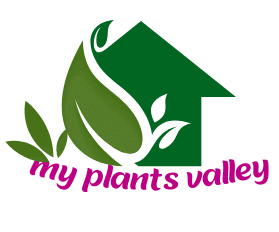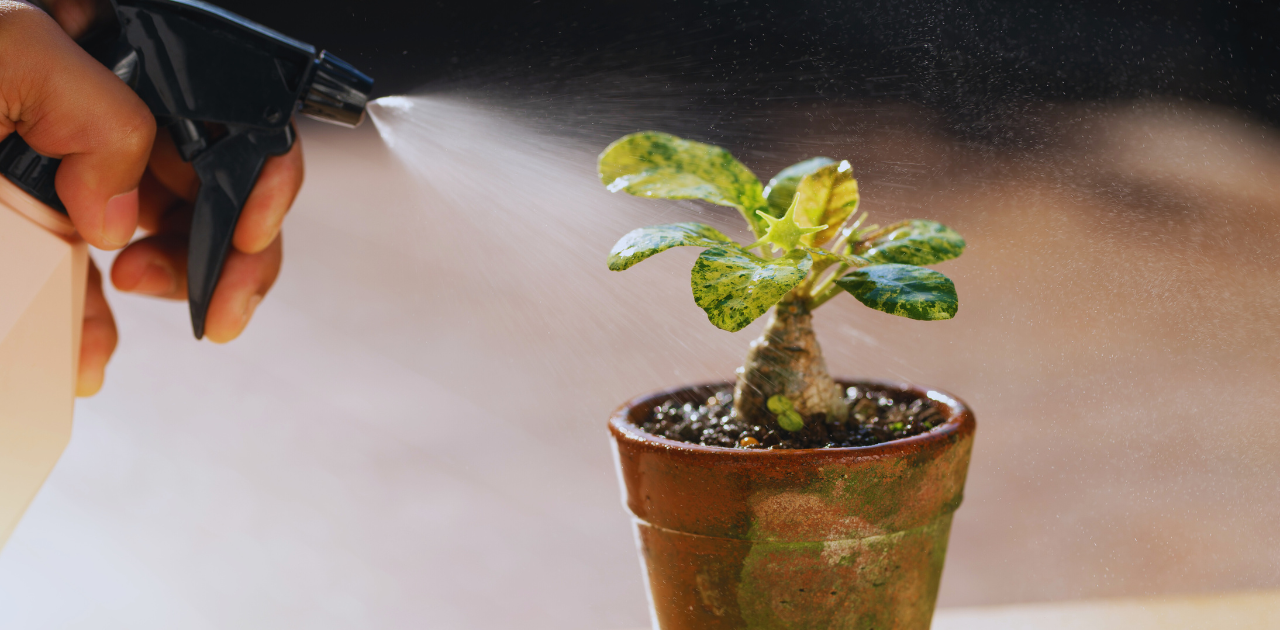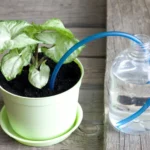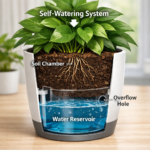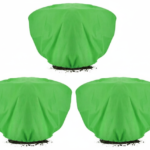Liquid nitrogen fertilizer can be a game-changer for your garden, offering a fast and efficient way to provide plants with the essential nutrients they need to thrive. Nitrogen is vital in promoting healthy, vibrant plant growth by aiding in chlorophyll production, which is crucial for photosynthesis. Without enough nitrogen, plants can become stunted, with yellowing leaves and poor overall health.
Using liquid nitrogen fertilizer in a hose sprayer is convenient for gardeners looking to cover large areas quickly and evenly. But is it the right choice for you? In this article, we’ll explore whether liquid nitrogen fertilizer is compatible with hose sprayers, how to apply it correctly, and what precautions you should take to ensure the safety of both your plants and the environment. By the end, you’ll clearly understand whether this method can enhance your gardening efforts or if another approach might suit your needs better.
What is liquid nitrogen fertilizer?

Liquid nitrogen fertilizer is a plant nutrient solution that primarily provides nitrogen, one of the essential elements required for plant growth. Nitrogen is critical for producing chlorophyll, which helps plants convert sunlight into energy through photosynthesis. In liquid form, this fertilizer is typically water-soluble and can be easily absorbed by plants. It delivers a quick and effective dose of nitrogen to help promote healthy growth, vibrant green foliage, and robust plant development.
Liquid nitrogen fertilizer is often used when plants exhibit signs of nitrogen deficiency, such as yellowing leaves, poor growth, or weak stems. It’s particularly valued for its fast-acting nature, as it can be applied directly to the soil or sprayed onto the foliage, allowing plants to absorb it quickly. Liquid nitrogen fertilizer is commonly used in agricultural settings, lawns, and gardens to maintain optimal plant health and improve crop yields.
Read our post: Best AeroGarden Liquid Nutrients Reviews 2024
Why Use Liquid Nitrogen Fertilizer?

Nitrogen is essential for plant growth, as it plays a key role in photosynthesis and protein production. Liquid nitrogen fertilizer provides this vital nutrient, helping plants develop strong roots, vibrant green foliage, and higher crop yields. It’s a versatile solution that supports plant health throughout the growing season, making it a go-to choice for many gardening and agricultural needs.
Rapid Absorption:
Liquid nitrogen fertilizer is quickly absorbed by plant roots and leaves, providing immediate results compared to slower-release granular fertilizers.
Quick Fix for Deficiencies:
This is ideal for treating nitrogen deficiencies, such as yellowing leaves, stunted growth, or weak stems, offering fast relief to struggling plants.
Efficient Application:
It is easy to apply with hose sprayers, allowing even coverage over large areas like lawns, gardens, and agricultural fields.
Boosts Plant Health:
Promotes healthy plant growth, vibrant green foliage, and better crop yields by supporting photosynthesis and protein production.
Versatility:
It is suitable for a wide range of plants, from lawns and gardens to crops, and provides balanced feeding throughout the growing season.
Is liquid nitrogen fertilizer eco-friendly?
Liquid nitrogen fertilizer, commonly used in agriculture, can give plants essential nitrogen to boost growth. However, its eco-friendliness is debatable. While it efficiently supplies nitrogen, overuse can lead to environmental issues. When applied in excess, nitrogen can leach into groundwater or run off into rivers and lakes, causing water pollution and contributing to eutrophication, which depletes oxygen levels and harms aquatic life.
The production of liquid nitrogen fertilizer also has a significant carbon footprint, as it involves energy-intensive processes, often relying on fossil fuels, leading to greenhouse gas emissions. Furthermore, improper application can release nitrous oxide, a potent greenhouse gas, into the atmosphere, exacerbating climate change.
To mitigate these impacts, it’s important to use liquid nitrogen fertilizers judiciously and follow best management practices. Alternatives like organic fertilizers or slow-release formulations can offer more sustainable solutions with reduced environmental risks.
The Benefits of Nitrogen-Rich Fertilizer for Your Garden
Nitrogen-rich fertilizer is essential for promoting healthy plant growth and vibrant foliage. Nitrogen is a critical element in chlorophyll, which allows plants to photosynthesize and convert sunlight into energy. A nitrogen-rich fertilizer ensures that plants have sufficient nutrients to develop strong, green leaves, which leads to better overall growth and productivity. It also supports root development, enabling plants to take up water and other nutrients more effectively. Using nitrogen-rich fertilizer can improve the health of your lawn, garden, and crops, leading to stronger plants and higher yields.
Comparison Between Granular and Liquid Forms
Granular Fertilizer:
- Slow-Release: Granular fertilizers break down gradually, providing nutrients over an extended period. This makes them a good choice for long-term feeding.
- Convenient for Pre-Planting: Granular fertilizers are often mixed into the soil before planting, offering a steady nutrient supply for plants as they grow.
- Cost-Effective: Typically more affordable, granular fertilizers can be a budget-friendly option for large areas.
Liquid Fertilizer:
- Fast-Acting: Plants quickly absorb liquid fertilizers, making them ideal for immediate nutrient deficiencies or quick growth boosts.
- Easy Application: Liquid fertilizers are easy to apply through hose sprayers, ensuring even distribution across large areas.
- Precise Control: Liquid form allows for more accurate dosing, reducing the risk of over-fertilization and plant damage.
Can You Use Liquid Nitrogen Fertilizer in a Hose Sprayer?

Yes, you can use liquid nitrogen fertilizer in a hose sprayer, but a few key considerations must be made to ensure an effective and safe application.
Compatibility of Liquid Nitrogen Fertilizer with Hose Sprayers
Most hose sprayers are compatible with liquid nitrogen fertilizers. These sprayers are designed to handle liquid solutions, mixing them with water as they spray over your garden or lawn. Since liquid nitrogen fertilizer is water-soluble, it easily works with hose sprayers, allowing for even distribution across large areas. Be sure to check the sprayer’s manufacturer instructions to confirm its compatibility with fertilizers, as some may have specific settings or limits on the types of liquids they can handle.
Read to know more: How to Water a Garden without a Hose: Sustainable Garden Watering
Things to Consider Before Using Liquid Nitrogen in a Sprayer
- Dilution: Ensure that the liquid nitrogen fertilizer is diluted correctly per the manufacturer’s instructions. Undiluted fertilizer can burn plants or damage the sprayer.
- Sprayer Settings: Adjust your hose sprayer settings to match the concentration of fertilizer for an even application. Incorrect settings can lead to over or under-application.
- Cleaning After Use: Always clean the sprayer thoroughly after using liquid nitrogen fertilizer to prevent clogs or damage and avoid cross-contamination with other treatments.
- Safety Precautions: Wear gloves and protective eyewear when handling liquid nitrogen fertilizer to avoid skin or eye irritation.
Advantages of Using a Hose Sprayer for Liquid Fertilizers
- Event Coverage: Ensures liquid fertilizer is distributed uniformly across large areas, preventing uneven nutrient application.
- Time-Saving: Speeds up the fertilizing process, allowing you to treat your garden or lawn in less time than manual watering or granular spreading.
- Ease of Use: The sprayer is simple to operate, and there is no need for complex equipment. Just attach it to your garden hose, and you’re ready to go.
- Precision Application allows for targeted application, reducing waste, and ensuring that plants receive the exact nutrients they need.
- Versatile: It is suitable for a variety of liquid fertilizers and garden treatments, such as pesticides or herbicides, making it a multifunctional tool.
- Watering and Fertilizing Combo: Simultaneously waters and fertilizes your plants, saving additional time and effort.
- Portable and Convenient: Hose sprayers are lightweight and portable, making them easy to maneuver around your garden.
Step-by-Step Guide to Applying Liquid Nitrogen Fertilizer via Hose Sprayer

Applying liquid nitrogen fertilizer with a hose sprayer is straightforward and can make fertilizing your garden more efficient. Follow these steps to ensure proper application and optimal results.
Gathering Your Materials
- Liquid Nitrogen Fertilizer: Ensure you have the correct type and amount of fertilizer for your needs.
- Hose Sprayer: Choose a sprayer compatible with liquid fertilizers and easily adjusted for proper application.
- Garden Hose: A standard garden hose will connect to the sprayer.
- Personal Protective Equipment (PPE): Wear gloves and safety glasses to protect your skin and eyes from the fertilizer.
Preparing the Liquid Nitrogen Fertilizer
- Read the Instructions: Check the manufacturer’s guidelines for the correct dilution ratio of the liquid nitrogen fertilizer.
- Dilute the Fertilizer: Mix the fertilizer with water according to the recommended ratio. Proper dilution ensures that the fertilizer is effective without harming your plants.
- Mix Well: Stir the solution thoroughly to ensure the fertilizer is evenly distributed in the liquid.
Setting Up the Hose Sprayer
- Attach the Sprayer: Connect the hose sprayer to your garden hose securely.
- Fill the Sprayer: Pour the prepared liquid nitrogen fertilizer solution into the sprayer’s reservoir.
- Adjust Settings: Set the sprayer to the recommended flow rate for even coverage. Check the sprayer’s manual for specific settings related to fertilizer application.
Application Tips for Best Results
- Timing: Apply the fertilizer early in the morning or late in the afternoon to avoid midday heat, which can cause rapid evaporation.
- Even Coverage: Walk slowly and spray the fertilizer evenly across the area, covering both the soil and plant foliage if necessary.
- Avoid Puddling: Ensure the fertilizer does not pool or run off, which can waste the product and potentially harm plants.
- Monitor Plants: After application, monitor your plants for signs of over-fertilization or stress and adjust future applications as needed.
Best Practices for Using Liquid Nitrogen Fertilizer
To maximize the benefits of liquid nitrogen fertilizer and ensure the health of your plants and environment, follow these best practices:
How Much Fertilizer to Use
- Follow Recommendations: Adhere to the manufacturer’s instructions for the amount of fertilizer to use. Typically, this will be specified as a ratio or concentration.
- Measure Carefully: Use measuring tools to ensure precise mixing and application. Over-application can harm plants and waste fertilizer.
- Consider Plant Needs: Different plants have varying nutrient requirements, so adjust the amount based on the specific needs of your garden or crops.
Timing Your Fertilizer Application
- Optimal Timing: Apply fertilizer during the growing season when plants actively take up nutrients. Early morning or late afternoon is ideal to avoid the heat of midday.
- Growth Stages: For best results, apply fertilizer at key growth stages, such as during spring growth spurts or before heavy flowering or fruiting periods.
Avoiding Over-Fertilization
- Follow Instructions: Stick to recommended application rates to avoid excess nitrogen, which can lead to nutrient imbalances or burn plants.
- Monitor Plants: Monitor plant health and adjust applications if you notice signs of over-fertilization, such as leaf burn or excessive foliage growth with little flowering or fruiting.
Personal Protective Equipment (PPE)
- Wear Gloves: Protect your hands from irritation while handling liquid nitrogen fertilizer.
- Use Safety Glasses: Wear safety glasses to prevent accidental splashes from getting into your eyes.
- Long Sleeves and Pants: Consider wearing long sleeves and pants to further protect your skin from contact with the fertilizer.
Safe Storage of Liquid Nitrogen Fertilizer
- Cool, Dry Place: Store fertilizer in a cool, dry area to prevent degradation or chemical reactions.
- Secure Container: Ensure the container is tightly sealed to avoid leaks and spills.
- Out of Reach: To prevent accidents or misuse, keep fertilizer away from children, pets, and unintended areas.
Environmental Considerations
- Avoid Runoff: Apply fertilizer carefully to prevent runoff into waterways, which can contribute to pollution and harm aquatic ecosystems.
- Use Efficiently: Apply only the amount needed to reduce excess nutrient buildup and minimize environmental impact.
- Follow Regulations: To ensure sustainable practices, be aware of and comply with local regulations regarding fertilizer use and environmental protection.
Disadvantages of Using Liquid Nitrogen Fertilizer in a Hose Sprayer
While using liquid nitrogen fertilizer in a hose sprayer can be effective, there are some potential drawbacks to consider:
- Risk of Over-Fertilization: More fertilizer can be applied if carefully measured and diluted, leading to plant burn or nutrient imbalances. This can be exacerbated if the sprayer settings need to be adjusted appropriately.
- Uniformity Issues: Even with a hose sprayer, achieving perfectly even coverage can be challenging. Areas with uneven application might receive less fertilizer, leading to consistent plant growth.
- Potential for Waste: Excess fertilizer may run off or puddle, particularly if applied too quickly or in large quantities, leading to wasted product and potential environmental harm.
- Clogging Concerns: Liquid nitrogen fertilizers can sometimes cause clogging in the sprayer if they are not properly diluted or if the sprayer is not thoroughly cleaned after use. This can affect the sprayer’s performance and may require additional maintenance.
- Limited Application Control: Hose sprayers may not offer the precise control needed for specific fertilization needs, such as targeted applications or treating small areas. This can make it harder to address particular plant requirements.
- Environmental Impact: Incorrect application or overuse can lead to nitrogen runoff, contributing to water pollution and harming aquatic ecosystems. Ensuring proper application techniques is crucial to minimize environmental impact.
Liquid Nitrogen Fertilizer Alternatives
If you’re looking for alternatives to liquid nitrogen fertilizer, several options can effectively meet your plants’ nutrient needs while offering different benefits. Here are some common alternatives:
Granular Nitrogen Fertilizers
- Slow-Release Formulas: These fertilizers gradually release nitrogen into the soil, providing a steady supply of nutrients over time. This helps reduce the risk of over-fertilization and can be more convenient for long-term feeding.
- Organic Options: Granular fertilizers from natural sources, such as blood or feather meal, provide nitrogen and other essential nutrients. They improve soil health and fertility over time.
Organic Liquid Fertilizers
- Compost Teas: Made by steeping compost in water, compost teas provide a balanced mix of nutrients, including nitrogen. They also introduce beneficial microbes to the soil, enhancing plant health.
- Fish Emulsion: This organic liquid fertilizer is rich in nitrogen and other nutrients. Plants quickly absorb it, providing a boost of nutrients while improving soil structure.
Urea-Based Fertilizers
- Solid Urea: A high-nitrogen, solid form of fertilizer that can be spread over or mixed into the soil. It is highly concentrated and provides a quick nutrient boost.
- Urea Ammonium Nitrate (UAN) Solutions: These liquid fertilizers combine urea with ammonium nitrate, offering a balanced mix of nitrogen forms. They are often used in agriculture for efficient nutrient delivery.
Manures and Organic Amendments
- Animal Manures: Cow, chicken, and horse manures are rich in nitrogen and other nutrients. They also improve soil structure and increase organic matter.
- Green Manures: Cover crops like clover or alfalfa, grown and then incorporated into the soil, can increase nitrogen levels naturally and enhance soil fertility.
Slow-Release Nitrogen Fertilizers
- Polymer-Coated Urea: These fertilizers are coated with a polymer that controls the release of nitrogen. They provide a slow, steady release of nutrients, reducing the need for frequent applications.
- Sulfur-Coated Urea: Similar to polymer-coated urea, sulfur-coated urea releases nitrogen slowly and helps to reduce nitrogen losses through volatilization.
Can I mix liquid nitrogen fertilizer with other fertilizers?
Yes, you can mix liquid nitrogen fertilizer with other fertilizers, but it’s important to do so carefully. When combining fertilizers, ensure they are compatible to avoid chemical reactions that can reduce their effectiveness or harm your plants. For instance, mixing nitrogen fertilizers with phosphorus or potassium fertilizers is common and can provide a balanced nutrient supply to plants.
However, avoid mixing liquid nitrogen fertilizers with calcium-based fertilizers, as they can react and form precipitates, making the nutrients unavailable to plants. Always check the labels for compatibility and follow the recommended guidelines for mixing ratios.
It’s also crucial to consider your plants’ specific needs and soil conditions. Over-fertilizing can lead to nutrient imbalances, harming plant health and the environment. To achieve the best results, conduct a soil test and consult with a local agricultural extension service or a gardening expert.
Tips for Using Liquid Nitrogen Fertilizer in a Hose Sprayer
Using liquid nitrogen fertilizer in a hose sprayer can be an efficient way to nourish your garden. Still, following best practices to ensure effective application and avoid potential issues is important. Here are some tips to help you get the best results:
Read the Instructions Carefully
Follow Manufacturer’s Guidelines: Always adhere to the recommended dilution ratios and application rates provided by the fertilizer manufacturer. This ensures you apply the right amount of nitrogen without harming your plants.
Proper Dilution
Mix Accurately: Dilute the liquid nitrogen fertilizer with water according to the instructions. Incorrect dilution can lead to over-fertilization or ineffective nutrient delivery.
Adjust Sprayer Settings
Set the Flow Rate: Configure the hose sprayer to match the recommended application rate. This helps ensure even distribution and avoids applying too much or too little fertilizer.
Apply Evenly
Move Steadily: Walk consistently and overlap your spraying paths slightly to achieve even coverage. Avoid lingering in one spot to prevent over-fertilization in specific areas.
Avoid Peak Sun Hours
Optimal Timing: Apply fertilizer early in the morning or late afternoon to minimize evaporation and ensure better plant absorption.
Clean the Sprayer Thoroughly
Prevent Clogging: After use, clean the sprayer with water to remove any residual fertilizer. This helps prevent clogs and ensures the sprayer remains in good working condition for future use.
Wear Protective Gear
Safety First: Use gloves and safety glasses to protect yourself from potential splashes or contact with the fertilizer. This helps prevent skin and eye irritation.
Monitor Plant Response
Observe Changes: Watch your plants for signs of stress or over-fertilization, such as leaf burn or excessive foliage growth. Adjust future applications if needed.
Avoid Over-Fertilization
Apply Moderately: Stick to recommended application rates to avoid nutrient imbalances and potential plant damage. Over-fertilizing can lead to negative effects such as nutrient runoff and pollution.
Consider Environmental Impact
Prevent Runoff: Apply the fertilizer when the soil is not waterlogged to reduce the risk of runoff. This helps minimize environmental impact and prevents nutrient pollution in waterways.
Frequently Asked Questions (FAQs)
How often should I apply liquid nitrogen fertilizer?
Application Frequency: The frequency of application depends on the type of plants you’re fertilizing and their growth stage. Generally, liquid nitrogen fertilizer is applied every 4 to 6 weeks during the growing season to most gardens and lawns. However, always follow the specific recommendations for the fertilizer you’re using and adjust based on the needs of your plants and soil conditions.
Can I use the same hose sprayer for different types of fertilizers?
Versatility: You can use the same hose sprayer for different liquid fertilizers, provided the sprayer is thoroughly cleaned between uses. Residual chemicals from one type of fertilizer can react with or dilute the effectiveness of another, so proper cleaning helps prevent cross-contamination and ensures the sprayer functions optimally.
Is liquid nitrogen fertilizer safe for all plants?
Plant Sensitivity: Liquid nitrogen fertilizer is generally safe for most plants when used correctly. However, some plants may be sensitive to high levels of nitrogen. Always follow application guidelines and monitor your plants for any adverse reactions. For sensitive plants, consider using a lower concentration or an alternative fertilizer.
Can liquid nitrogen fertilizer harm my lawn?
Potential Risks: If over-applied, liquid nitrogen fertilizer can harm your lawn by causing nitrogen burn, which results in brown or yellow patches. To avoid this, adhere to recommended application rates and avoid applying fertilizer in excessive amounts. Properly calibrate your sprayer and apply the fertilizer evenly.
What should I do if I over-apply liquid nitrogen fertilizer?
Immediate Action: If you accidentally over-apply liquid nitrogen fertilizer, water the area thoroughly to help dilute and wash away excess nutrients. This can help reduce the risk of fertilizer burn and nutrient imbalances. Monitor your plants closely for signs of stress and adjust future applications as needed. Consider consulting with a gardening professional for additional advice if severe damage occurs.
Conclusion
In conclusion, while mixing liquid nitrogen fertilizer with other fertilizers is possible, carefully considering compatibility and plant needs is required. Properly combined, these fertilizers can provide a balanced nutrient supply, enhancing plant growth. However, avoid incompatible mixtures, such as calcium-based fertilizers, to prevent nutrient loss or plant damage. Always follow recommended mixing ratios and guidelines to ensure the best outcomes. Conducting soil tests and seeking expert advice can help create an effective and safe plant fertilization plan.
